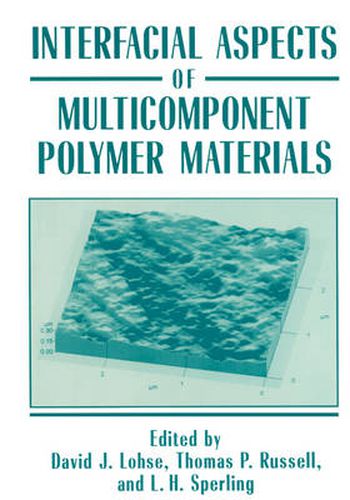Readings Newsletter
Become a Readings Member to make your shopping experience even easier.
Sign in or sign up for free!
You’re not far away from qualifying for FREE standard shipping within Australia
You’ve qualified for FREE standard shipping within Australia
The cart is loading…






This title is printed to order. This book may have been self-published. If so, we cannot guarantee the quality of the content. In the main most books will have gone through the editing process however some may not. We therefore suggest that you be aware of this before ordering this book. If in doubt check either the author or publisher’s details as we are unable to accept any returns unless they are faulty. Please contact us if you have any questions.
In August, 1996, the ACS Division of Polymeric Materials: Science and Engineering hosted a symposium on Interfacial Aspects of Multicomponent Polymer Materials at the Orlando, Florida, American Chemical Society meeting. Over 50 papers and posters were presented. The symposium proper was preceded by a one-day workshop, where the. basics of this relatively new field were developed. This edited book is a direct outcome of the symposium and workshop. Every object in the universe has surfaces and interfaces. A surface is defined as that part of a material in contact with either a gas or a vacuum. An interface is defined as that part of a material in contact with a condensed phase, be it liquid or solid. Surfaces of any substance are different from their interior. The appearance of surface or interfacial tension is one simple manifestation. Polymer blends and composites usually contain very finely divided phases, which are literally full of interfaces. Because interfaces are frequently weak mechanically, they pose special problems in the manufacture of strong, tough plastics, adhesives, elastomers, coatings, and fibers. This book provides a series of papers addressing this issue. Some papers delineate the nature of the interface both chemically and physically. The use of newer instrumental methods and new theories are described. Concepts of interdiffusion and entanglement are developed. Other papers describe state-of-the-art approaches to improving the interface, via graft and block copolymers, direct covalent bonding, hydrogen bonding, and more.
$9.00 standard shipping within Australia
FREE standard shipping within Australia for orders over $100.00
Express & International shipping calculated at checkout
This title is printed to order. This book may have been self-published. If so, we cannot guarantee the quality of the content. In the main most books will have gone through the editing process however some may not. We therefore suggest that you be aware of this before ordering this book. If in doubt check either the author or publisher’s details as we are unable to accept any returns unless they are faulty. Please contact us if you have any questions.
In August, 1996, the ACS Division of Polymeric Materials: Science and Engineering hosted a symposium on Interfacial Aspects of Multicomponent Polymer Materials at the Orlando, Florida, American Chemical Society meeting. Over 50 papers and posters were presented. The symposium proper was preceded by a one-day workshop, where the. basics of this relatively new field were developed. This edited book is a direct outcome of the symposium and workshop. Every object in the universe has surfaces and interfaces. A surface is defined as that part of a material in contact with either a gas or a vacuum. An interface is defined as that part of a material in contact with a condensed phase, be it liquid or solid. Surfaces of any substance are different from their interior. The appearance of surface or interfacial tension is one simple manifestation. Polymer blends and composites usually contain very finely divided phases, which are literally full of interfaces. Because interfaces are frequently weak mechanically, they pose special problems in the manufacture of strong, tough plastics, adhesives, elastomers, coatings, and fibers. This book provides a series of papers addressing this issue. Some papers delineate the nature of the interface both chemically and physically. The use of newer instrumental methods and new theories are described. Concepts of interdiffusion and entanglement are developed. Other papers describe state-of-the-art approaches to improving the interface, via graft and block copolymers, direct covalent bonding, hydrogen bonding, and more.